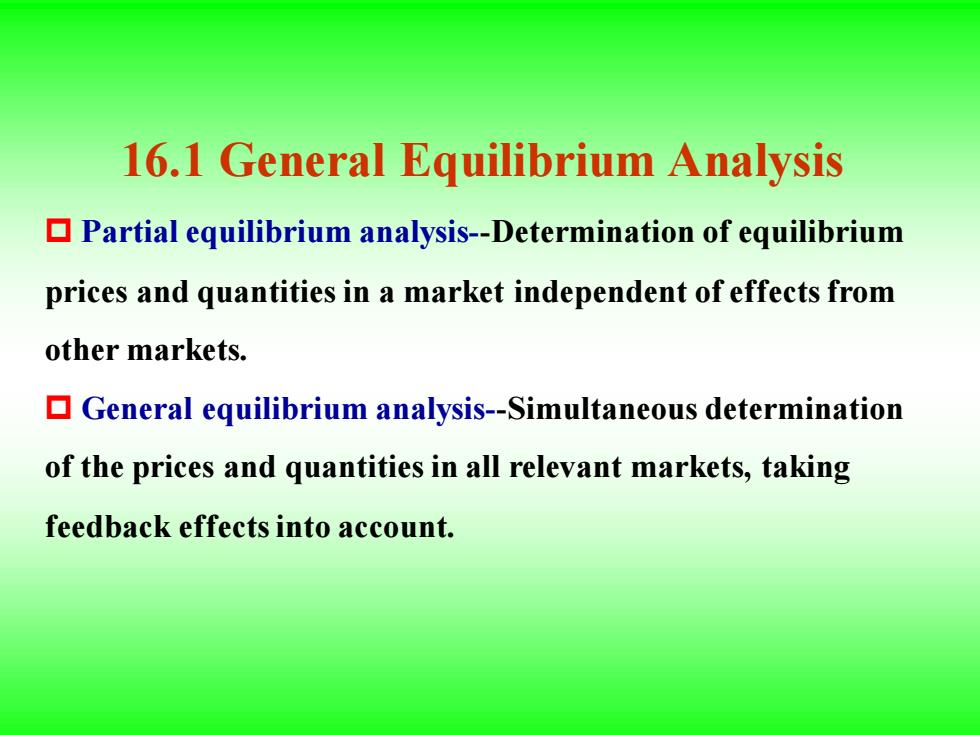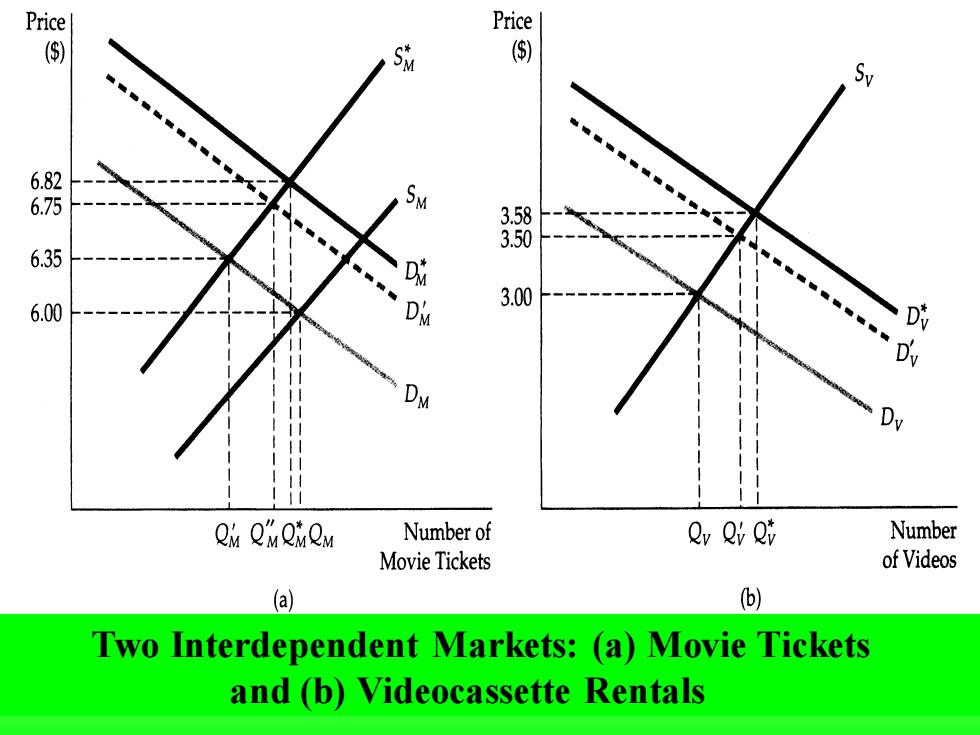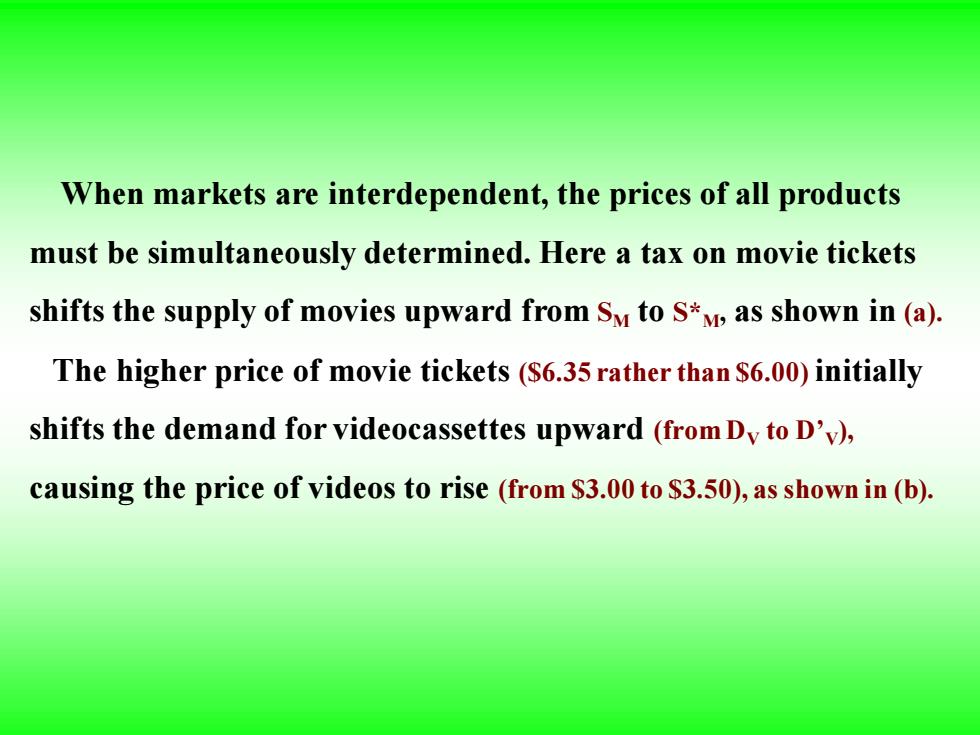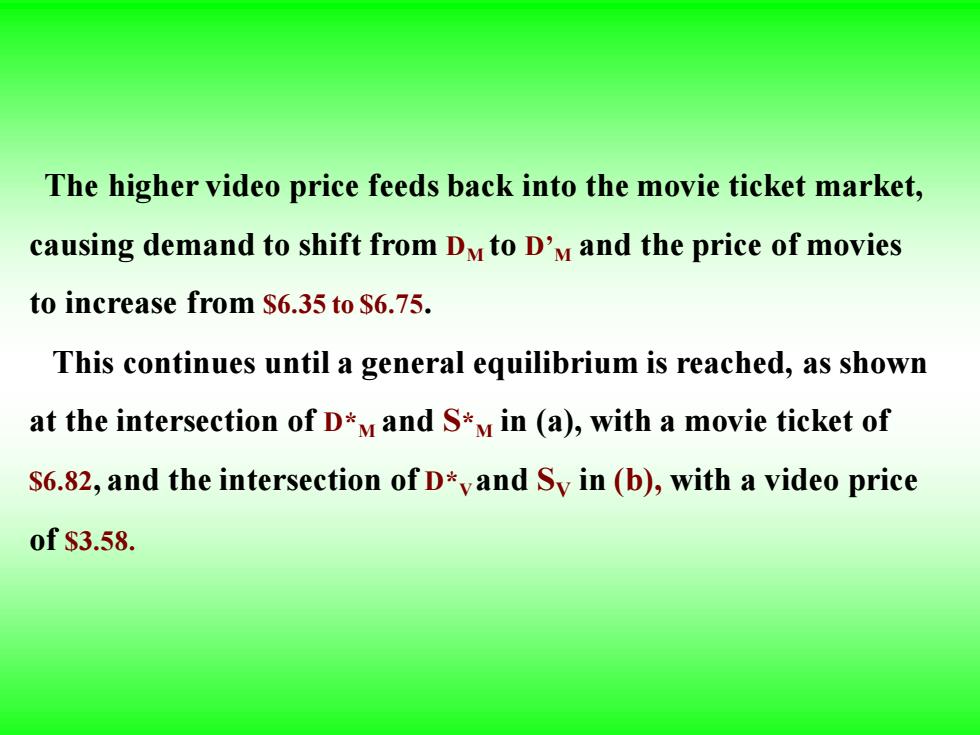
Chapter 16 General Equilibrium and Economic Efficiency Chapter Outline General Equilibrium Analysis Efficiency in Exchange Equity and Efficiency Efficiency in Production ·The Gains(得益)from Free Trade An Overview-The Efficiency of Competitive Markets ·Why Markets fail
Chapter 16 General Equilibrium and Economic Efficiency Chapter Outline • General Equilibrium Analysis • Efficiency in Exchange • Equity and Efficiency • Efficiency in Production • The Gains (得益) from Free Trade • An Overview—The Efficiency of Competitive Markets • Why Markets fail

16.1 General Equilibrium Analysis Partial equilibrium analysis-Determination of equilibrium prices and quantities in a market independent of effects from other markets. General equilibrium analysis-Simultaneous determination of the prices and quantities in all relevant markets,taking feedback effects into account
16.1 General Equilibrium Analysis Partial equilibrium analysis-Determination of equilibrium prices and quantities in a market independent of effects from other markets. General equilibrium analysis-Simultaneous determination of the prices and quantities in all relevant markets, taking feedback effects into account

Price Price ) SM ) Sv 6.82 6.75 3.58 3.50 6.35 D 6.00 3.00 D吃 D Dy QMQMOMQM Number of Qy Qr Q7 Number Movie Tickets of Videos (a) (b) Two Interdependent Markets:(a)Movie Tickets and (b)Videocassette Rentals
Two Interdependent Markets: (a) Movie Tickets and (b) Videocassette Rentals

When markets are interdependent,the prices of all products must be simultaneously determined.Here a tax on movie tickets shifts the supply of movies upward from Sy to S*M,as shown in (a). The higher price of movie tickets($6.35 rather than $6.00)initially shifts the demand for videocassettes upward (from Dy to D'v), causing the price of videos to rise (from $3.00 to $3.50),as shown in(b)
When markets are interdependent, the prices of all products must be simultaneously determined. Here a tax on movie tickets shifts the supply of movies upward from SM to S*M, as shown in (a). The higher price of movie tickets ($6.35 rather than $6.00) initially shifts the demand for videocassettes upward (from DV to D’V), causing the price of videos to rise (from $3.00 to $3.50), as shown in (b)

The higher video price feeds back into the movie ticket market, causing demand to shift from Dy to D'm and the price of movies to increase from $6.35 to $6.75. This continues until a general equilibrium is reached,as shown at the intersection of D*M and S*m in(a),with a movie ticket of $6.82,and the intersection of D*y and Sy in (b),with a video price 0fS3.58
The higher video price feeds back into the movie ticket market, causing demand to shift from DM to D’M and the price of movies to increase from $6.35 to $6.75. This continues until a general equilibrium is reached, as shown at the intersection of D*M and S* M in (a), with a movie ticket of $6.82, and the intersection of D*V and SV in (b), with a video price of $3.58